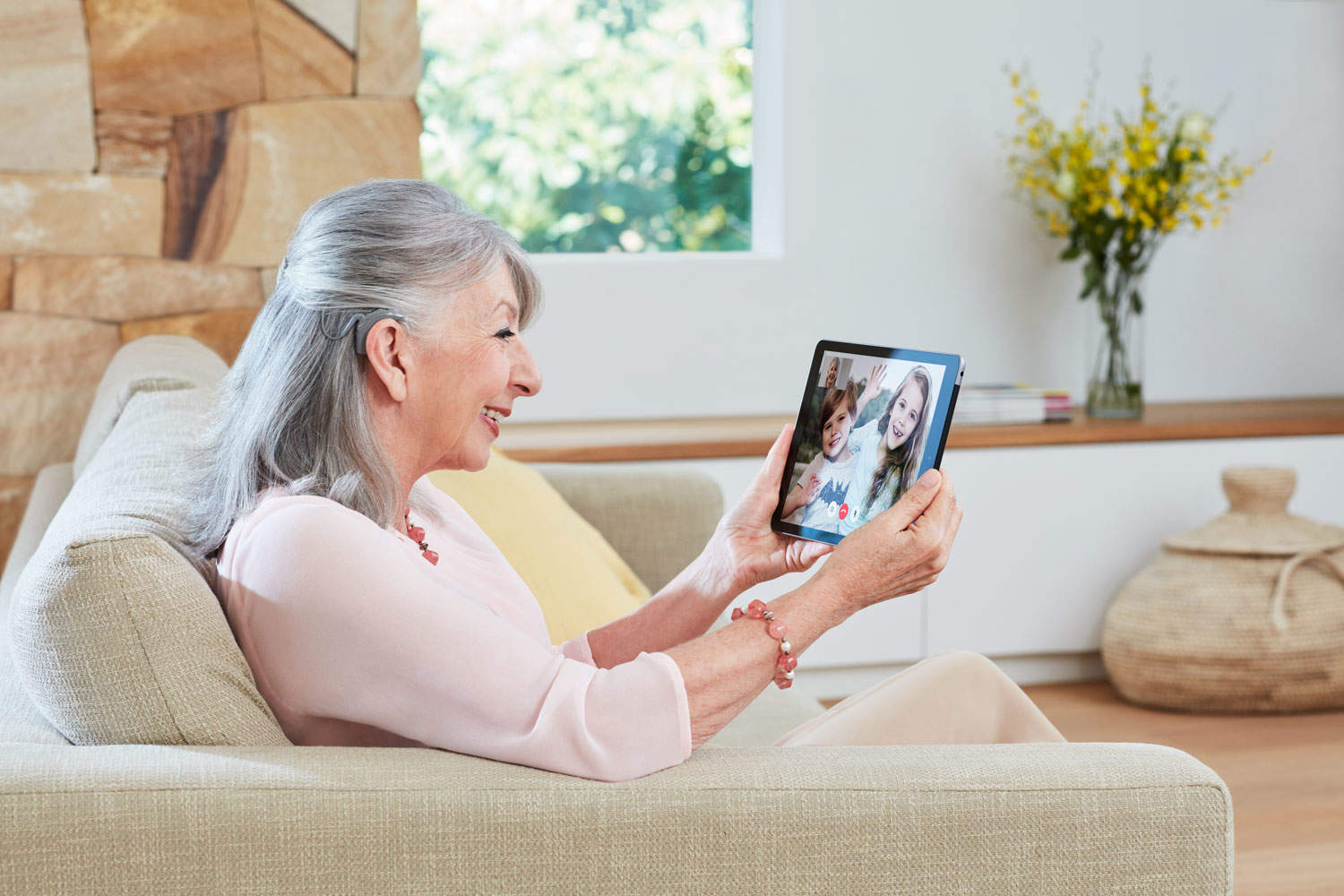
In 1982, an Australian man named Graham Carrick made history when a new invention implanted in his cochlea was ‘switched on’ and 15 minutes later he could hear for the first time in 17 years. Some 35 years and hundreds of thousands of Cochlear implants later, it’s the value-added features of the bionic ear’s newest incarnations that are generating headlines.
Since the world’s first multi-channel cochlear implant was FDA approved in 1985, it has transformed the lives of over 300,000 people. While hearing aids amplify sound, helping individuals with residual hearing ability, a cochlear implant allows people with profound hearing loss to experience the sensation of sound by electrically stimulating the inner ear.
These devices have always been made up of two components: an external part that contains a microphone, a sound processor and a transmitter, and a surgically implanted internal part, which houses a receiver and one or more electrode arrays, which directly stimulate the auditory nerve. The newest additions to the market also boast additional features designed to make their users’ lives even easier – ranging from wireless charging to direct-to-iPhone streaming capability.
iPhone streaming: a seamless experience
The latest innovation at Cochlear, the company behind the original multi-channel cochlear implant, is the world’s first made-for-iPhone cochlear implant sound processor, the Nucleus 7, which allows users to stream sound from iPhone, iPad and iPod touch directly to their sound processor.
Approved by the FDA in June, it’s the smallest and lightest behind-the-ear cochlear implant sound processor available on the market. Users can also control, monitor and customise their hearing through its companion Nucleus Smart App, available to download for free from the App Store.
“Apple has had a very strong focus on the accessibility space for many years, so we felt it was a natural progression for us to collaborate with them,” says Cochlear’s chief software officer Victor Rodriguez.
How well do you really know your competitors?
Access the most comprehensive Company Profiles on the market, powered by GlobalData. Save hours of research. Gain competitive edge.

Thank you!
Your download email will arrive shortly
Not ready to buy yet? Download a free sample
We are confident about the unique quality of our Company Profiles. However, we want you to make the most beneficial decision for your business, so we offer a free sample that you can download by submitting the below form
By GlobalDataWith Cochlear’s newest sound processor, audio can be streamed directly to users’ implant without an intermediary device. “It’s as seamless as picking up your phone and answering the call immediately without having to fiddle around with any other settings,” Rodriguez explains. “But the real beauty of it is that it’s not only for phone calls; you can stream YouTube videos or music directly to your processor in crystal clear sound, too.”
Through the ‘hearing tracker’ feature on the app, users (or their parents) can also monitor how often they have been exposed to speech and set goals for themselves (or their children). Plus, it records coil-offs time – that is, the time the sound processor coil does not detect the implant coil because it has, for example, fallen off a child’s head.
For Rodriguez, the most interesting part of the research and development of the processor was educating Apple about cochlear implants, a process that was absolutely necessary to ensure that the system was designed in such a way that customers would not only understand but enjoy it.
“When we first started doing this with Apple, the cochlear implant space was very new to them,” he explains. “During the initial R&D process, we had to get them up to speed on how our industry works, how our customers use our devices, what benefits they get from them and the clinical experience for patients – from the assessment stage to surgery, fitting and tuning. It was a phenomenal learning curve for them and we enjoyed taking them through that journey.”
Wireless charging: saving hassle and increasing reliability
While Cochlear has been focusing on iPhone compatibility, Austria-based hearing implant systems company MED-EL has developed RONDO 2, the industry’s first cochlear implant powered by wireless charging, which gives users a full day of hearing from one overnight charge and saves them the hassle of replacing the disposable batteries that were required to power the previous version of the device. In a single year, powering the device every day would require more than 700 batteries, costing in excess of £330.
“Wireless charging also increases the reliability of these devices because replacing batteries can cause damage. Eliminating this is a big bonus,” says MED-EL’s director of product management Gregor Dittrich.
It wasn’t an easy system to get right, largely thanks to the extra antenna required to make the wireless charging work. “We have three different antennae in this device,” Dittrich explains. “One is used to transmit the power and signal to the implant, one is used to connect audio devices for streaming music or making phone calls, and now we have a third link, which allows wireless charging.
“One of the biggest challenges was to make all these antennae work together and not compromise each other. Through fine-tuning the device and the components, we managed to make it work.”
Feedback from users who have tested the new device, which is available now, has been positive. “First, they loved the wearing comfort, because the device is almost 20% lighter than the previous device and it feels much more stable on the head,” Dittrich notes. “But the overwhelming feedback was on the usability and the fact they didn’t need to fiddle around with batteries. They have one less thing to worry about as they just need to take it from the charging pad at the beginning of the day, press one button and it’s on.”
Looking ahead, MED-EL’s goal is to make the next generation of devices even smaller and lighter, as well as capitalising on advances in rechargeable technology to increase their power efficiency.





